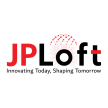Measuring ROI of Custom eLearning Development Solutions
Education App Development Companies also benefit from ROI measurement. Understanding the tangible advantages their solutions bring to educational institutions can not only aid them in refining their products but also build trusting partnerships over time.

As today's educational landscape continues to transform, demand for custom eLearning solutions has skyrocketed. Educational institutions, corporations, and organizations are turning more often to software development companies for tailored eLearning experiences that meet their individual needs. However, as investments increase for such solutions, it becomes essential to monitor Return On Investment (ROI).
ROI in custom eLearning development solutions is an intricate concept, going far beyond simple financial gains. It takes into account outcomes such as improved learning outcomes, greater engagement among employees, enhanced employee performance, and cost savings. Educational software Development Company play a vital role in designing and implementing these solutions. Therefore, they must demonstrate the tangible benefits they bring their clients.
This introduction will examine various dimensions of measuring ROI in custom eLearning development solutions. We will discuss key performance indicators (KPIs) that educational institutions and businesses should take into account, such as learner satisfaction, knowledge retention, reduced training costs, and increased productivity. Furthermore, qualitative aspects will also be assessed, such as how aligned the solution is with the organization's goals and values.
The Importance of Measuring eLearning ROI
Measuring and assessing custom eLearning ROI is crucial for any organization to succeed, as it allows them to determine how effective their training program is, as well as whether or not investing further is worthwhile.
ROI metrics can help organizations justify the costs associated with training courses and programs, compare different training initiatives, and set more focused training goals. They also allow companies to identify any areas for improvement within an enterprise.
A straightforward approach for tracking training effectiveness and measuring how learning adds value to organizations is to implement an impact assessment model.
Steps to Assess Custom eLearning Development
Measuring the Return on Investment for Custom eLearning Development
Establishing the value of your eLearning initiatives by measuring their return on investment (ROI). Your business leaders often prefer numbers, so presenting this measure of your training's worthiness is often the best way of conveying its worthiness. Here are a few steps that you should follow to assess its success:
1. Calculate an Estimated Return On Investment
Before embarking on an Education App Development Services project, it's wise to assess its anticipated return on investment (ROI). Unlike conventional practice of computing ROI after development has concluded, having insight into this projected ROI can provide organizations with invaluable information that helps inform decisions as well as partner selection for development initiatives.
2. Make Sure All Costs Are Considered
When measuring return on investment (ROI), we take into account all expenses related to developing an eLearning course. Costs associated with typical custom eLearning development for various elements may include:
Designing instruction
Content creation, visual design, and animation costs
*eLearning advanced technologies such as virtual classrooms, remote learning infrastructure, application tools, and learning management systems (LMSs).
Outside the standard expenses associated with eLearning development, unexpected and hidden costs may emerge, such as hiring extra resources. To avoid such additional expenditure, an external partner might be more cost-effective; learn more here.
3. Create a Plan for Data Collection
Every large project requires a plan for collecting the necessary numbers that demonstrate success, including survey questions or testing tools such as skills-based exams.
4. Implement Kirkpatric's Model
Determining return on investment (ROI) without properly assessing results can be impossible, which is why Kirkpatrick proposed his model of measuring effectiveness using four levels:
Reaction: Reaction allows you to gain insight into how learners perceive their training program and will enable you to address any potential issues with it, clear up any confusion, and fine-tune your initiative as necessary. Furthermore, this level also reveals whether learners feel your program is effective.
Learning: This factor defines what course learners have learned through online education. You can assess any increases in knowledge or abilities over time using assignments, quizzes, tests, or knowledge demonstrations.
Behavior: This factor assesses how learners apply their knowledge in the workplace to measure whether there is consistency between learning and practice. After learners complete a course, this level is used to determine any changes in behavior as a result of participating in the training program.
Results: Training outcomes can be evaluated easily and most frequently by looking at how productivity has increased; you could also evaluate cost reduction, quality improvements, increased efficiency, higher sales, or employee retention as metrics of success.
Kirkpatrick's assessment method will help you measure the overall outcomes of employee participation in eLearning. It indicates whether or not your desired learning outcomes were attained, and it will allow you to determine your eLearning Return on Investment (ROI) accurately. Once completed, these four levels will allow for efficient measurement of custom eLearning ROI.
Increase Your Return On eLearning Development Solutions
There are various methods to maximize return with custom eLearning development solutions, and one way is outlined here:
Establish Well-Defined Objectives
A key aspect of optimizing the return on investment from custom eLearning development solutions is setting clear objectives. Organizations can utilize this step to evaluate its effects by outlining measurable targets like increasing abilities or shortening training duration.
These goals serve as metrics by which to assess the efficacy of an eLearning solution.
Collecting Data
Learning analytics play a pivotal role in optimizing the return on investment for custom eLearning development solutions. Organizations gain invaluable knowledge regarding their training programs' efficiency through data collection on student progress, engagement levels, and knowledge retention.
Data provides the foundation for accurate ROI estimates and allows businesses to make well-informed decisions.
Comparing Custom eLearning Development Solutions with Conventional Approaches
An effective way of demonstrating the return on investment (ROI) of custom eLearning development solutions is through conducting a cost-benefit analysis. Organizations use this technique to highlight customization by comparing the costs and results of personalized eLearning with traditional training techniques.
An evaluation may reveal reduced costs associated with travel, venue reservations, and printed materials.
Continuous Improvement
Maximizing the Return on Investment for custom eLearning development solutions relies on continuous improvement to optimize their Return on Investment (ROI). Regular evaluation can ensure alignment with changing organizational needs by regularly assessing the usefulness and efficacy of customized eLearning content.
By maintaining high levels of engagement and knowledge transfer, proactive approaches help to maximize return on investment over time.
Evaluation and Assessment
Gathering learner feedback and performance data can significantly increase the return on investment of custom eLearning development solutions, providing organizations with opportunities to continuously optimize their unique eLearning solutions by taking into account user insights.
Organizations can optimize the learning process by acting upon user ideas and recognizing patterns, increasing engagement with learning while improving results.
Conclusion
Assessing the Return on Investment (ROI) of custom eLearning development solutions is an essential task for both educational institutions and Education App Development Company. With digital learning becoming a cornerstone of education today, assessing investment made into custom eLearning development should become essential for evaluating its efficacy.
Custom eLearning solutions offer educational institutions a wealth of benefits that include increased engagement, enhanced learning outcomes, and an overall better student experience. However, to justify such investments accurately, they must track the return on investment (ROI). Metrics such as improved test scores, reduced dropout rates, or student satisfaction provide insight into their impactful impact.
Education App Development Companies also benefit from ROI measurement. Understanding the tangible advantages their solutions bring to educational institutions can not only aid them in refining their products but also build trusting partnerships over time. Proving positive returns increases their standing as reliable partners in an ever-evolving education technology landscape.
About the Creator
JPLoft Solutions
JPLoft Solutions is one of the top-rated Mobile App Development Company in Colorado. The company attained this feat with its constant and dedicated efforts in the development sector. And now over a time span of 10+ years,






Comments
There are no comments for this story
Be the first to respond and start the conversation.